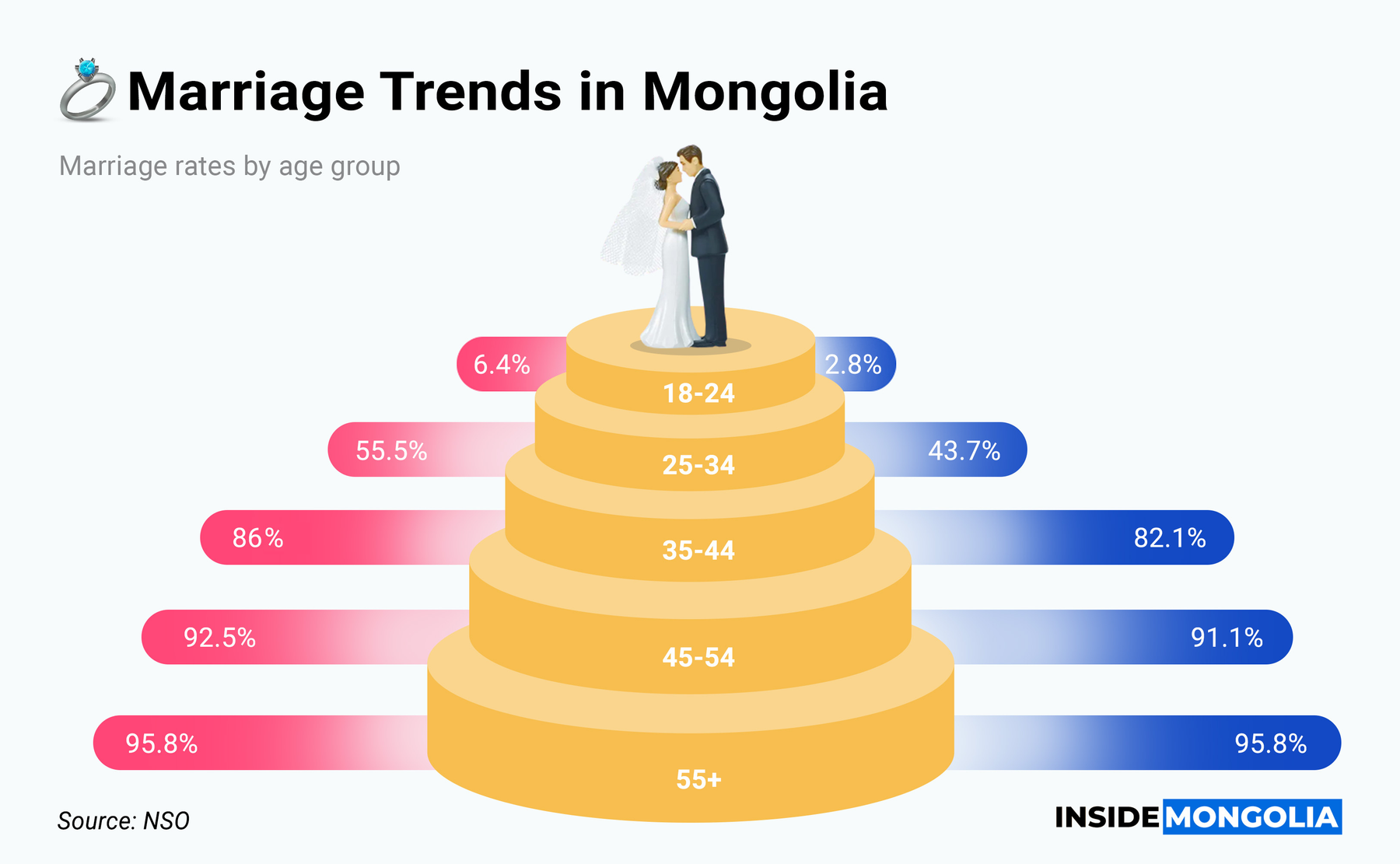Nearly Half of Mongolians are Married
Khulan M.
February 17, 2025
February 17, 2025

Belated Happy Valentine’s Day! Did you know that in Mongolia, 360 couples share the same name, while 287 couples celebrate their love on the same birthday? Furthermore, nearly half of the population is already married. However, statistics reveal a clear trend: women tend to marry earlier than men, although the gap diminishes with age.
🤔 Trend in the Age Gap
In Mongolia, 49.9% of the population is already married, while 34.6% have never been married. However, when and how people enter marriage varies significantly by age and gender.
- 🐥 Early Marriage: Marriage is uncommon in this age group, but women still marry at a higher rate than men. Only 2.8% of men are married, compared to 6.4% of women. This early disparity suggests that social or cultural norms encourage women to settle down at a younger age.
- 👨🏻🦱👩🏻🦰 The Gap Widens in Young Adulthood: Marriage rates rise significantly, but the gender gap remains. Among those aged 25-34, 55.5% of women are married, compared to 43.7% of men. This trend indicates that men often delay marriage due to career priorities, financial stability, or personal choices.
- 🗽 Marriage Becomes the Norm After 35: By their mid-30s, marriage becomes the norm for most Mongolians, and the gender gap nearly disappears. In this age group, 82.1% of men and 86% of women are married.
- 🤔 Near-Universal Marriage in Later Life: For those aged 45-55 and older, marriage becomes almost universal, with both men and women reaching a 95.8% marriage rate. This suggests that long-term singlehood or lifelong bachelorhood is relatively rare in Mongolia.
🙂↔️ Marriage Does Not Equal Births
Despite nearly half of Mongolians being married, the country is experiencing a significant demographic shift. Last year, the birth rate dropped to its lowest level since 2008, raising concerns about Mongolia’s future population growth. Several factors contribute to this decline.
- 🙃 The rising cost of living, housing, and childcare discourages young couples from having children. More people prioritize careers, financial stability, and personal freedom before starting a family. Additionally, as men tend to marry later than women, childbirth may also be delayed.
Mongolia’s marriage trends show a strong cultural preference for settling down, but shifting economic and social dynamics are reshaping family life. If this trend continues, policies supporting young families may become increasingly important for sustaining population growth.
Comment